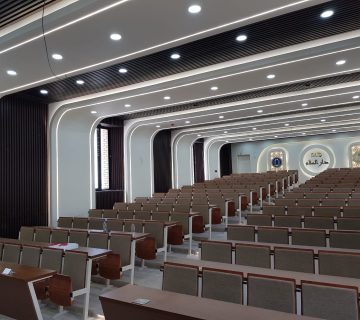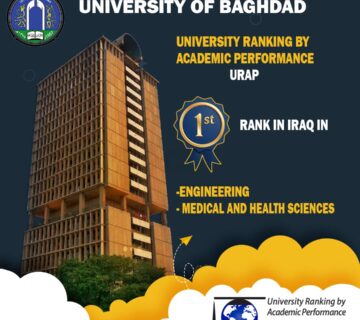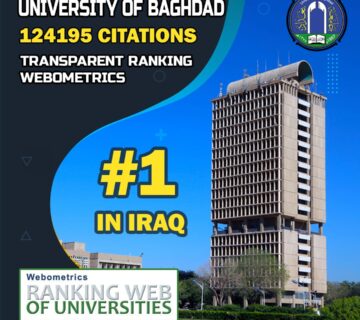- Using smart lighting methods based on the presence of people inside the building and automatic switching off when no one is present, and that the structures used are of an economical type, such as LED lights.
- Using Power factor correction panels that are connected to the main panels that supply inductive loads such as engines, central cooling devices and regular cooling for buildings such as the University Presidency Tower building.
- The use of double and reflective glass for sunlight
- Reducing the door and window openings to the minimum permissible limits, which usually do not exceed 20% of the permitted spaces, especially on the upper floors.
- Covering the walls with insulators inside and out to ensure thermal storage, which is very large, such as fiberglass, rock wool, wood, cork, polyurethane, polystyrene, light foam concrete, metal panels and others.
- Structurally, it is preferable to build with bricks for weight-bearing walls and to stay away from concrete blocks (blocks).
- Using lightweight concrete blocks (thermostone) to construct non-weight bearing walls.
- The use of double hollow walls, which include an air cavity or an insulating material.
- The use of colors with low heat absorption capacity and high heat reflectivity
- Constructing horizontal and vertical sunblocks, especially on the eastern facades of buildings that are exposed to long hours of sunlight.
- External shading of buildings using wooden nets and vertical, inclined and rotating external awnings made of wood, plastics and metals.
- Shading using trees, umbrellas, plants and water bodies.
- Using Chillers and Package Unit central cooling systems without using Split Unity and Window Types for the purpose of air conditioning in order to reduce the consumption of electrical energy spent.
- Using laser faucets with IR sensors for the purpose of sensing whether or not water is used to reduce the consumption of water sewage instead of using ordinary faucets, which often have more water consumption than the laser faucet.
- Using solar energy to generate electric power for pure water pumping stations and heavy water lifting stations to reduce the rationalization of electrical energy spent for this purpose.
In coordination with the Departments of Energy and Environmental Engineering within the university’s policy to generate renewable energy based on wind and solar energy:
1- Wind energy: the number of turbines is 4 / the electric power used is 1000 watts
2- Solar energy numbering 20 cells / the average produced energy from 30 to 130 watts
Its uses are in (water desalination – electric power generation – water heating) in addition to the presence of a parameter device (2) to measure (the amount of rain – wind speed – measuring the intensity of sunlight – measuring humidity).

 ثم 'إضافة إلى الشاشة الرئيسية'
ثم 'إضافة إلى الشاشة الرئيسية' ثم 'إضافة إلى الشاشة الرئيسية'
ثم 'إضافة إلى الشاشة الرئيسية'










